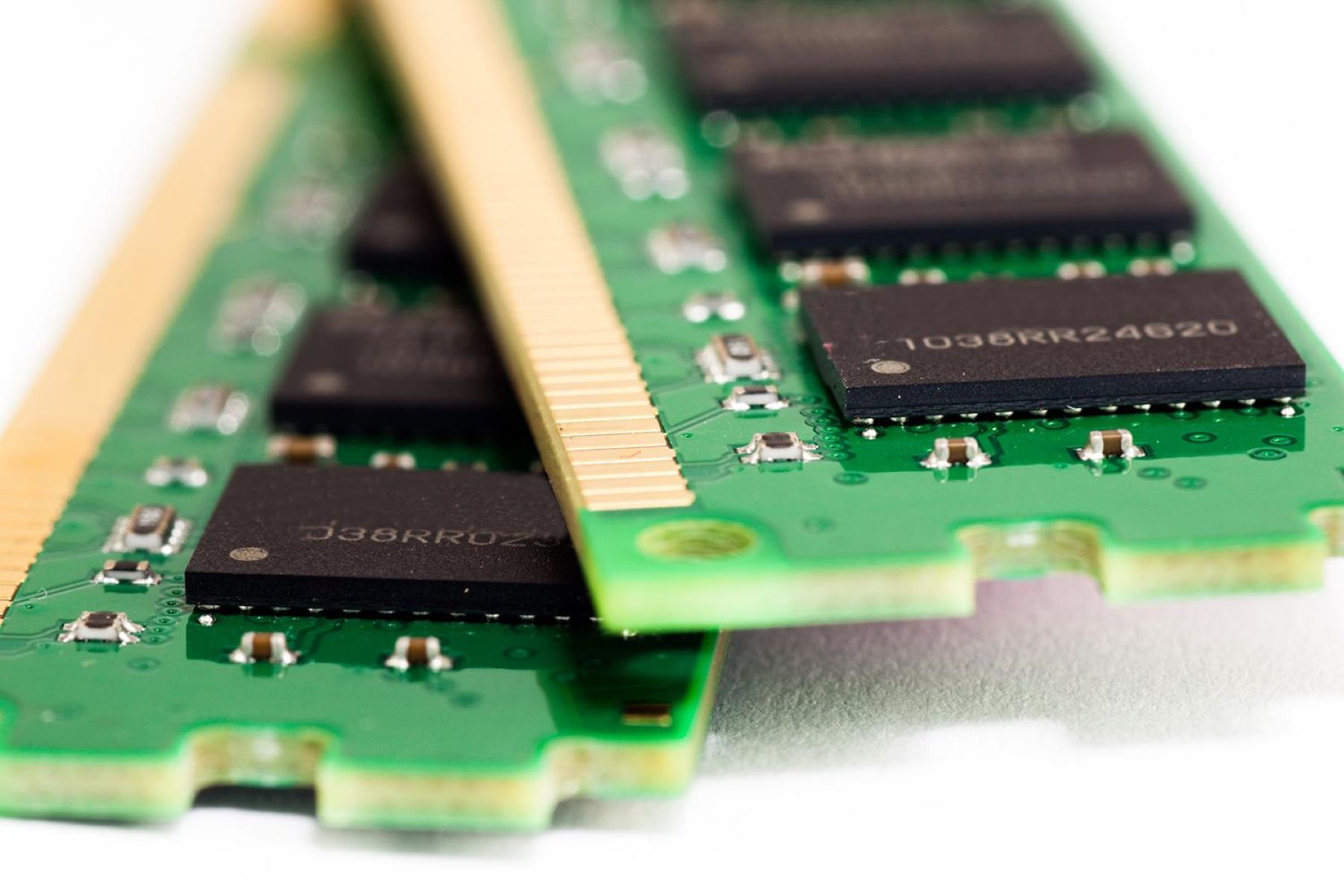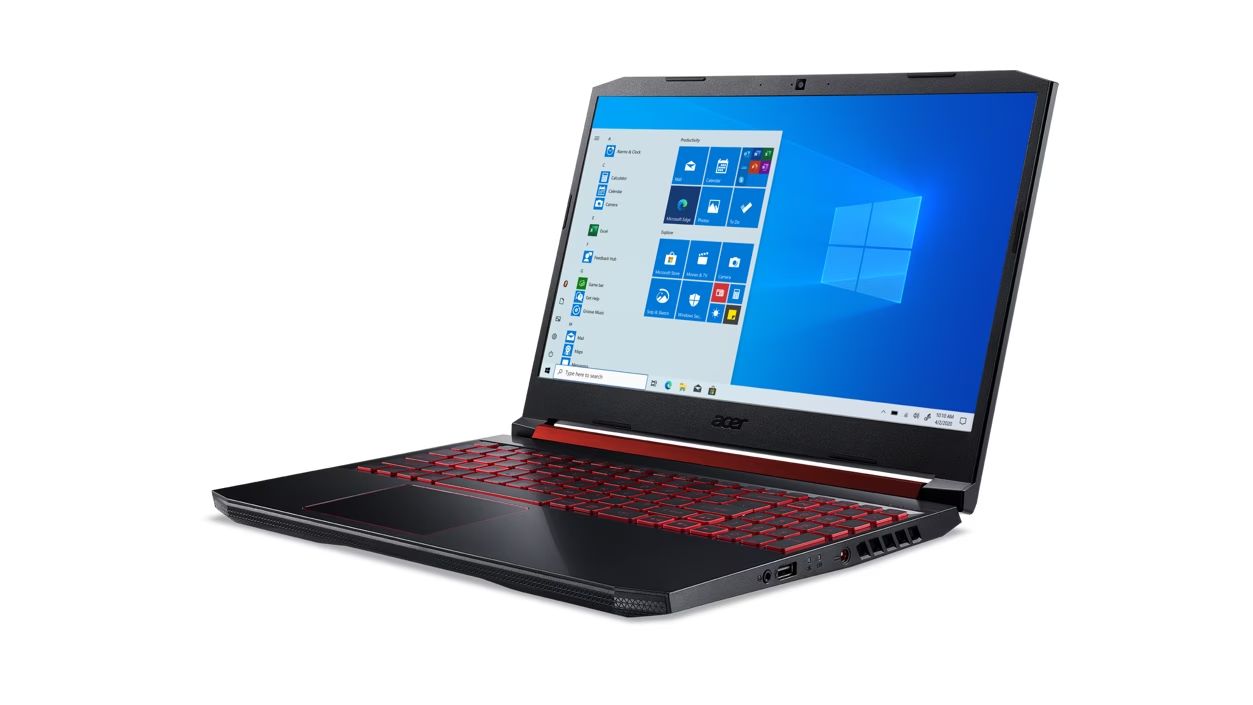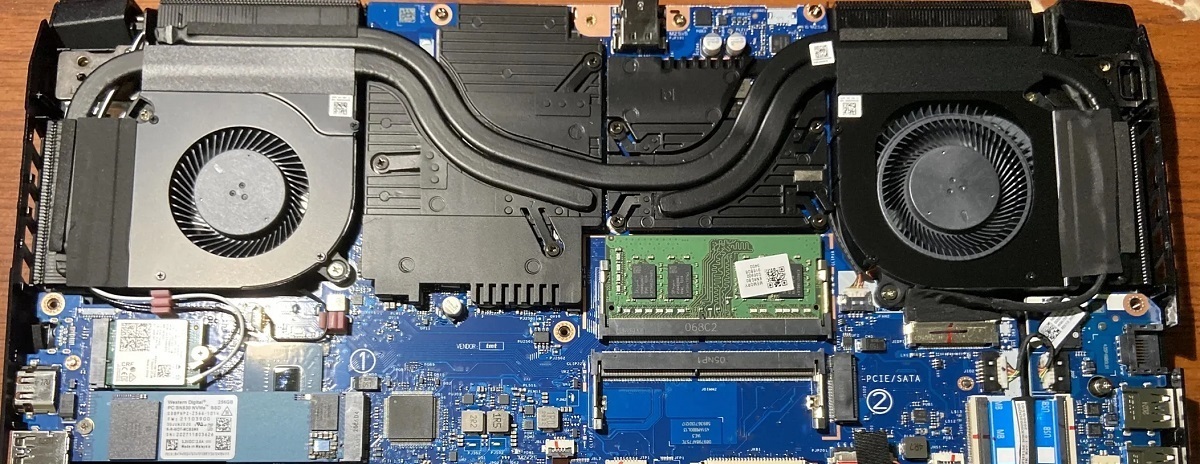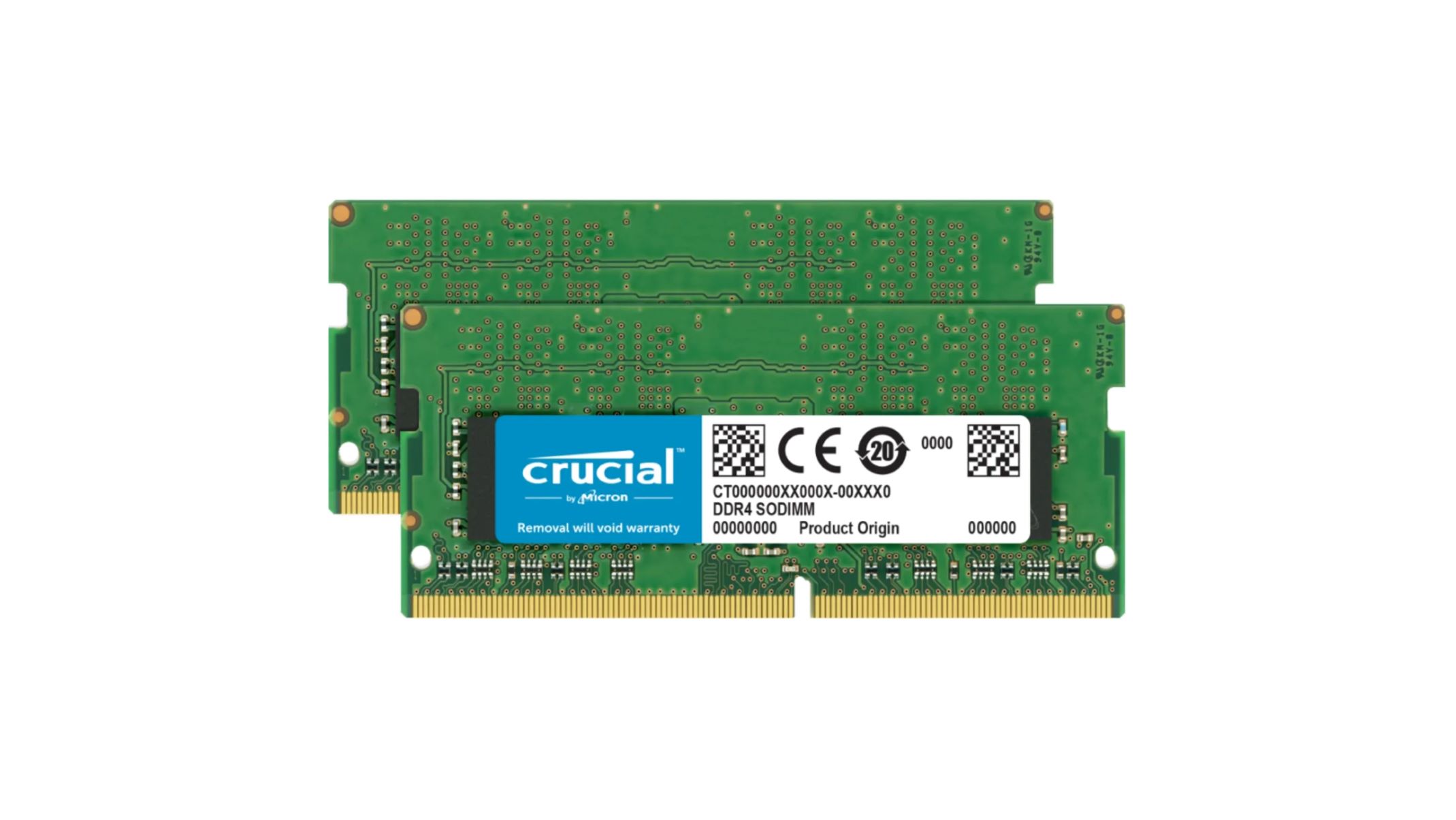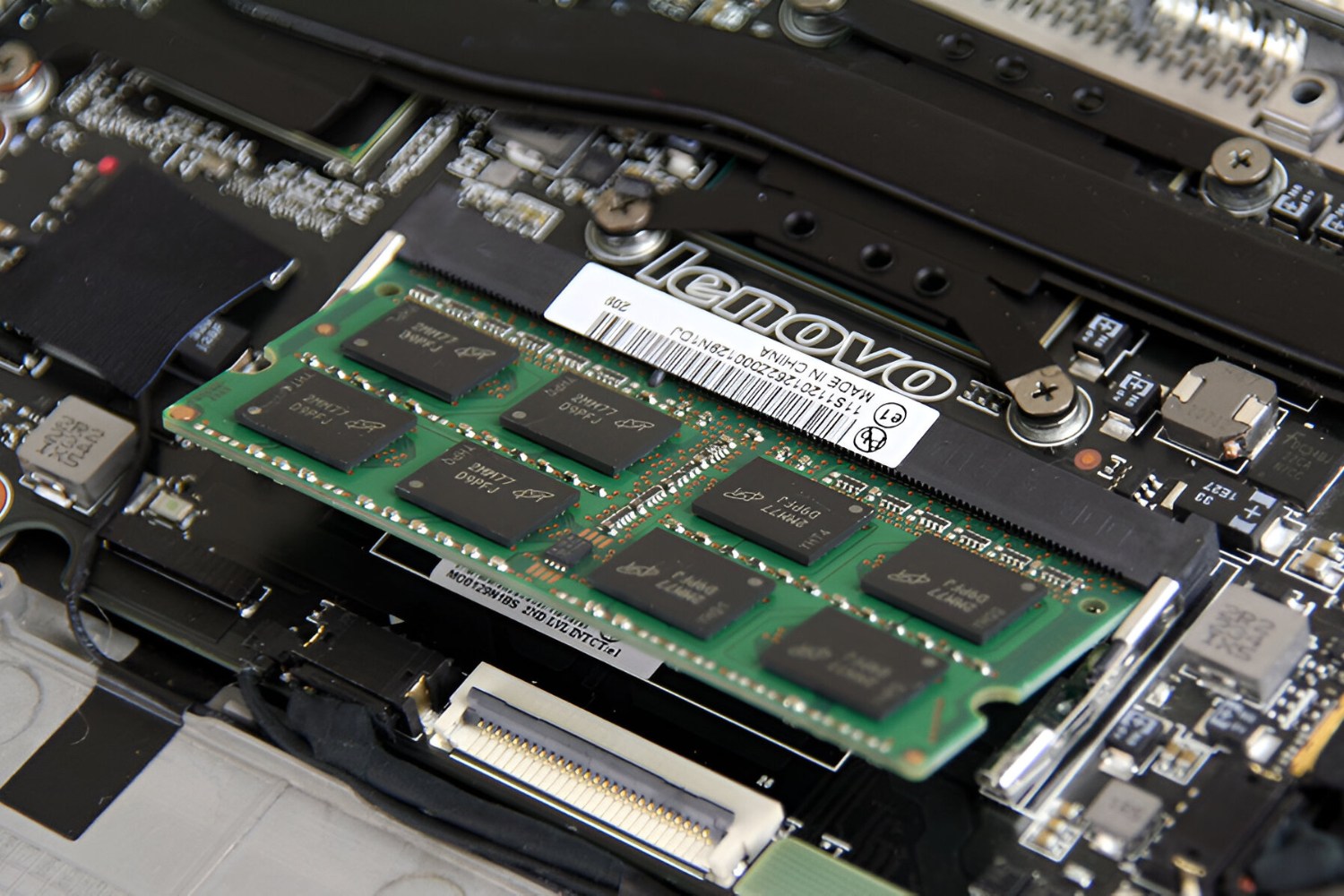Why Does RAM Matter in a Laptop?
When it comes to the performance of a laptop, RAM (Random Access Memory) plays a crucial role. RAM is the temporary storage where your laptop stores the data it needs to access quickly. It acts as a bridge between the processor and the storage drive, allowing your laptop to retrieve and process data efficiently.
The amount of RAM in your laptop directly impacts its ability to multitask and handle demanding tasks. With more RAM, your laptop can store and access more data simultaneously, resulting in smoother and faster performance. This is especially important if you regularly use resource-intensive applications such as video editing software, graphic design tools, or virtualization software.
Not having enough RAM can lead to sluggishness, freezing, and even crashes when your laptop runs out of memory. Opening multiple browser tabs, running multiple applications, or working with large files can quickly consume the available RAM, reducing the overall performance of your laptop.
In addition to multitasking, RAM also affects the speed at which your laptop processes data. Faster RAM modules allow for quicker retrieval and processing of data, resulting in snappier performance and shorter load times when launching applications or accessing files.
Furthermore, RAM also plays a role in gaming performance. Many modern games require a significant amount of RAM to run smoothly. Insufficient RAM can lead to choppy frame rates, lag, and longer loading times in games.
Overall, having sufficient RAM in your laptop is crucial for a smooth and efficient computing experience. It ensures that you can multitask without experiencing slowdowns, allows for fast data processing, and improves performance in resource-intensive tasks such as gaming or content creation.
How Does RAM Affect Laptop Performance?
RAM (Random Access Memory) plays a significant role in determining the performance of your laptop. It impacts several aspects of your laptop’s overall functionality.
Firstly, RAM affects multitasking capabilities. When you run multiple applications simultaneously, each program requires a certain amount of memory to function optimally. Insufficient RAM can lead to slow response times, freezing, and overall sluggishness. With more RAM, your laptop can handle multiple tasks effortlessly, providing a smoother and more efficient multitasking experience.
Secondly, RAM plays a crucial role in speeding up data access. When you open an application or access a file, data is retrieved from the storage drive and temporarily stored in RAM for faster access. The more RAM you have, the more data your laptop can store in its memory, reducing the need to continually access the slower storage drive. This results in faster load times and improved overall performance.
In addition to multitasking and data access, RAM also impacts gaming performance. Modern games often require a significant amount of memory to run smoothly. If your laptop lacks sufficient RAM, it may struggle to run games with high memory requirements, resulting in lower frame rates, lag, and longer loading times. By having a suitable amount of RAM, you can ensure smoother gameplay and enhanced gaming experiences.
It’s important to note that the speed of the RAM modules also affects performance. The higher the speed of the RAM, the faster data can be transferred between RAM and the processor. This can have a noticeable impact on overall system responsiveness and application load times.
Overall, RAM plays a critical role in laptop performance. It enables efficient multitasking, speeds up data access, and enhances gaming experiences. Having sufficient RAM, along with the appropriate speed, ensures that your laptop can handle demanding tasks smoothly and delivers a seamless computing experience.
Understanding RAM Size and Speed
When it comes to RAM (Random Access Memory), two important factors to consider are size and speed. Understanding these two aspects can help you make informed decisions when choosing the right RAM for your laptop.
The size of the RAM module determines how much data your laptop can store and access simultaneously. RAM is typically measured in gigabytes (GB). The more RAM you have, the better your laptop will be able to handle multitasking and memory-intensive tasks. While 4GB or 8GB of RAM may be sufficient for basic tasks like web browsing and document editing, if you engage in activities such as video editing, gaming, or running virtual machines, you’ll benefit from having 16GB or more of RAM.
On the other hand, RAM speed refers to the rate at which data can be transferred between the RAM and the processor. It is measured in megahertz (MHz) and represents the frequency at which the RAM operates. Higher-speed RAM modules facilitate faster data transfer, resulting in improved overall system responsiveness and shorter application load times. However, it’s important to note that the actual impact on performance may vary depending on other hardware components and the specific tasks you perform on your laptop.
When considering RAM size and speed, it’s essential to ensure compatibility with your laptop’s motherboard. Not all laptops are capable of supporting large amounts of RAM or high-speed modules. Checking your laptop’s specifications or consulting the manufacturer’s documentation can help you determine the maximum supported RAM capacity and speed.
If you plan to upgrade your laptop’s RAM, it’s recommended to match the new RAM module with the existing one in terms of size and speed. However, if you want to maximize performance, you may consider replacing the existing RAM modules entirely with higher-capacity and higher-speed ones.
Keep in mind that upgrading your laptop’s RAM can be a cost-effective way to boost performance, but it’s not a solution for all performance issues. Factors such as the processor, storage drive, and graphics capabilities also play significant roles in overall laptop performance.
Understanding the size and speed of RAM is crucial in optimizing your laptop’s performance. It allows you to choose the right amount of RAM based on your usage requirements and select modules that offer the appropriate speed for your specific needs.
Choosing the Right RAM for Your Laptop
When it comes to choosing the right RAM (Random Access Memory) for your laptop, several factors need to be considered to ensure compatibility and optimal performance. Here are some key points to keep in mind:
1. Determine the suitable RAM capacity: Assess your computing needs and determine how much RAM you require. If you mainly use your laptop for basic tasks like web browsing and word processing, 4GB to 8GB of RAM should be sufficient. However, for more demanding tasks such as gaming, video editing, or running virtual machines, consider opting for 16GB or more of RAM.
2. Check your laptop’s specifications: Before purchasing RAM, check your laptop’s specifications to determine the supported RAM type, maximum capacity, and supported speeds. This information can usually be found on the manufacturer’s website or in the laptop’s user manual.
3. Consider the RAM speed: Higher RAM speeds can lead to better performance in terms of data transfer rates. However, it’s important to ensure that the RAM speed is supported by your laptop’s motherboard. In some cases, the laptop’s chipset or processor may limit the maximum RAM speed that can be utilized.
4. Choose the right RAM type: There are different types of RAM available, such as DDR3, DDR4, and LPDDR4. Make sure to choose the one that is compatible with your laptop’s motherboard. DDR4 is the most common and widely supported type in modern laptops.
5. Stick to reputable brands: When purchasing RAM, opt for reputable brands that have a track record of reliability and performance. This will help ensure that you are getting high-quality RAM modules that are less likely to encounter compatibility or performance issues.
6. Consider future upgrades: If you plan on upgrading your laptop’s RAM in the future, it’s wise to purchase RAM modules with spare slots in mind. For example, if your laptop has two RAM slots and you’re planning to upgrade to 16GB in the future, consider purchasing two 8GB RAM modules rather than a single 16GB module.
By considering these factors and carefully selecting the right RAM for your laptop, you can ensure compatibility and maximize its overall performance. If you’re unsure about the specific RAM requirements for your laptop, consult with a professional or refer to the manufacturer’s guidelines to make an informed decision.
Different Types of RAM for Laptops
When it comes to upgrading or purchasing RAM (Random Access Memory) for your laptop, it’s important to understand the different types of RAM available. Each type has its own features and compatibility requirements. Here are the most common types of RAM for laptops:
1. DDR3: DDR3 (Double Data Rate 3) is an older type of RAM that was widely used in laptops released before 2015. It operates at lower speeds compared to newer generations of RAM. While DDR3 is still available and can be a cost-effective option for older laptops, it may not be compatible with newer laptop models.
2. DDR4: DDR4 (Double Data Rate 4) is the current standard for laptop RAM. It offers improved speed and efficiency compared to DDR3. DDR4 RAM operates at higher frequencies and has a higher memory density, allowing for faster data transfer rates. Most modern laptops support DDR4 RAM, and it offers a good balance between performance and affordability.
3. LPDDR4: LPDDR4 (Low Power Double Data Rate 4) is a type of RAM commonly used in ultrabooks, lightweight laptops, and other power-efficient devices. LPDDR4 RAM consumes less power compared to DDR4, resulting in improved battery life. While LPDDR4 may not be as readily available or compatible with all laptop models, it can be an excellent choice for users who prioritize energy efficiency.
4. DDR4L: DDR4L (Double Data Rate 4 Low Voltage) is a low-voltage variant of DDR4 RAM. It operates at a lower voltage than standard DDR4 RAM, which leads to lower power consumption and less heat generation. DDR4L RAM is often used in laptops that require better energy efficiency or have strict power constraints.
5. DDR5 (upcoming): DDR5 (Double Data Rate 5) is the next-generation RAM technology that promises even higher speeds and greater efficiency compared to DDR4. While DDR5 is not yet widely available at the time of writing, it is expected to offer significant performance improvements. As DDR5 becomes more accessible, it may become the standard for future laptop models.
When choosing RAM for your laptop, it’s important to consider the compatibility requirements, including the supported RAM type and maximum capacity specified by your laptop’s manufacturer. It’s recommended to consult the laptop’s specifications or seek professional advice if you’re unsure about the appropriate RAM type for your specific laptop model.
Common RAM Upgrade Mistakes to Avoid
Upgrading the RAM (Random Access Memory) in your laptop can significantly improve its performance and multitasking capabilities. However, there are some common mistakes that people make during the RAM upgrade process. By being aware of these mistakes, you can avoid potential issues and ensure a successful RAM upgrade.
1. Incompatible RAM: One of the most common mistakes is purchasing RAM that is incompatible with your laptop’s motherboard. Before buying RAM, check your laptop’s specifications to determine the supported RAM type, maximum capacity, and speed. This will help ensure that the RAM you purchase will be compatible with your laptop.
2. Incorrect RAM capacity: Another mistake is selecting the wrong RAM capacity. It’s important to assess your needs and choose the appropriate amount of RAM for your laptop. Installing too little RAM may not provide the desired performance boost, while installing too much RAM may be unnecessary and more expensive.
3. Mixing different RAM modules: Mixing different RAM modules with varying capacities, speeds, or brands can lead to compatibility issues and performance inconsistencies. It is recommended to use identical RAM modules, preferably from the same manufacturer and with the same specifications, to ensure proper functioning.
4. Not properly seating the RAM: Improperly seating the RAM modules in the memory slots can prevent your laptop from booting or cause intermittent issues. Make sure to firmly and evenly insert the RAM modules into the slots and ensure they are fully seated and locked in place.
5. Failing to discharge static electricity: Static electricity can damage sensitive computer components, including RAM modules. Before handling RAM, discharge static electricity by touching a grounded metal object or using an anti-static wrist strap. This helps protect the RAM and prevent potential damage.
6. Ignoring firmware or BIOS updates: Some laptops may require firmware or BIOS updates to support higher-capacity or higher-speed RAM modules. Before upgrading your RAM, check for any available updates for your laptop’s firmware or BIOS and install them if necessary.
7. Not reinstalling RAM properly after maintenance: If you have performed any maintenance or repairs on your laptop, such as cleaning the internals or replacing other components, make sure to reinstall the RAM properly. Check that all connections are secure and that the RAM is seated correctly.
8. Overlooking the need for a 64-bit operating system: If you are upgrading to a large amount of RAM (typically 4GB or more), make sure your laptop is running a 64-bit operating system. 32-bit operating systems can only utilize a limited amount of RAM, so upgrading to a larger capacity may not provide any benefit.
By avoiding these common RAM upgrade mistakes, you can ensure a smooth and successful upgrade process. If you’re unsure about any aspect of the upgrade, it’s always a good idea to consult a professional or seek guidance from the manufacturer to ensure you make the right choices for your laptop.
How to Install RAM in a Laptop
Installing RAM (Random Access Memory) in a laptop is a relatively straightforward process. Follow the steps below to upgrade your laptop’s RAM:
1. Gather the necessary tools: Ensure you have a small Phillips screwdriver and an anti-static wrist strap or mat to protect the components from static electricity.
2. Shut down and unplug your laptop: Power off your laptop and disconnect it from the power source. This is necessary to prevent any electrical damage and ensure your safety during the installation.
3. Locate the RAM compartment: Check your laptop’s user manual or manufacturer’s website to find the location of the RAM compartment. It is usually located on the bottom of the laptop and may be labeled.
4. Remove the access panel: Use the screwdriver to remove the screws securing the access panel. Carefully remove the panel to reveal the RAM slots.
5. Discharge static electricity: Before handling the RAM modules, discharge any static electricity by touching a grounded metal object or wearing an anti-static wrist strap.
6. Remove the existing RAM (if applicable): If there are existing RAM modules in the slots, gently spread the retention clips on each side of the module to release it. Then, carefully remove the module from the slot at a 45-degree angle.
7. Install the new RAM modules: Insert the new RAM modules into the empty slots at the same 45-degree angle, aligning the notch on the module with the groove in the slot. Firmly press down until the module is fully seated and the retention clips on each side click into place.
8. Replace the access panel: Once you have installed the new RAM modules, carefully replace the access panel and secure it with the screws.
9. Power on your laptop: Plug in your laptop and power it on. It should automatically detect the new RAM modules during the startup process.
10. Verify the new RAM: After your laptop has booted up, go to the system settings or use system information software to confirm that your laptop recognizes the newly installed RAM and displays the correct capacity.
It’s important to note that the installation process may vary slightly depending on the laptop model. If you’re unsure about any steps or encounter any difficulties, consult the laptop’s user manual or seek assistance from a professional technician.
Tips for Maximizing RAM Performance in Your Laptop
Optimizing the performance of your laptop’s RAM (Random Access Memory) can greatly enhance its overall efficiency and responsiveness. Here are some tips to help you maximize the performance of your laptop’s RAM:
1. Close unnecessary applications: Running multiple applications simultaneously consumes RAM. Close any unnecessary programs or background processes to free up memory for the tasks you are actively working on.
2. Limit browser tabs: Web browsers, especially with multiple tabs open, can use a significant amount of RAM. Limiting the number of open tabs or using browser extensions that suspend unused tabs can help conserve memory.
3. Avoid resource-intensive applications: Certain applications, such as video editing software or virtualization tools, can heavily utilize RAM. If possible, avoid running these applications simultaneously to prevent excessive memory usage.
4. Optimize virtual memory settings: Virtual memory is a reserved space on your hard drive that acts as an extension of RAM. Adjusting the virtual memory settings can help improve system performance. Set the virtual memory size to a fixed value or let the system manage it automatically.
5. Keep your laptop clean and well-ventilated: Overheating can lead to performance issues, including RAM slowdowns. Keep your laptop’s ventilation system clean and ensure proper airflow to prevent overheating and memory-related problems.
6. Update your operating system and drivers: Keeping your operating system and drivers up to date can ensure compatibility and optimize performance. Regularly check for updates and install them to benefit from bug fixes and performance enhancements.
7. Run regular malware scans: Malware and viruses can consume system resources, including RAM. Conduct regular malware scans using reliable antivirus software to detect and remove any threats that might affect system performance.
8. Disable startup programs: Some programs automatically start with your laptop, consuming valuable system resources. Disable unnecessary startup programs using the Task Manager or System Configuration Utility to free up RAM.
9. Upgrade to an SSD: If your laptop is still using a traditional hard disk drive (HDD), consider upgrading to a solid-state drive (SSD). SSDs provide faster data access and improve overall system responsiveness, reducing the reliance on RAM for storage access.
10. Restart your laptop regularly: Restarting your laptop clears the memory, refreshes system processes, and helps free up unused RAM. Restart your laptop at least once a week to maintain optimal performance.
By following these tips, you can make the most of your laptop’s RAM and ensure that it operates at peak performance, allowing you to work smoothly and efficiently.
Conclusion
RAM (Random Access Memory) is a vital component of a laptop that significantly impacts its performance and multitasking capabilities. Understanding the importance of RAM size, speed, and compatibility is crucial when choosing and upgrading RAM for your laptop.
Adequate RAM allows for efficient multitasking, faster data processing, and improved gaming experiences. Choosing the right RAM size based on your computing needs and ensuring compatibility with your laptop’s motherboard are key considerations.
When installing or upgrading RAM, it’s important to be aware of common mistakes to avoid, such as purchasing incompatible RAM or not properly seating the modules. Following the correct installation procedures and taking precautions to discharge static electricity are essential for a successful RAM upgrade.
Maximizing RAM performance can be achieved by closing unnecessary applications, limiting browser tabs, optimizing virtual memory settings, and keeping your laptop clean and well-ventilated. Regular operating system and driver updates, running malware scans, disabling startup programs, upgrading to an SSD, and restarting your laptop regularly can also contribute to optimized RAM performance.
In conclusion, RAM plays a critical role in the overall performance and efficiency of your laptop. By understanding its significance, making informed choices, and implementing best practices, you can ensure that your laptop operates at its full potential and provides a smooth and seamless computing experience.










